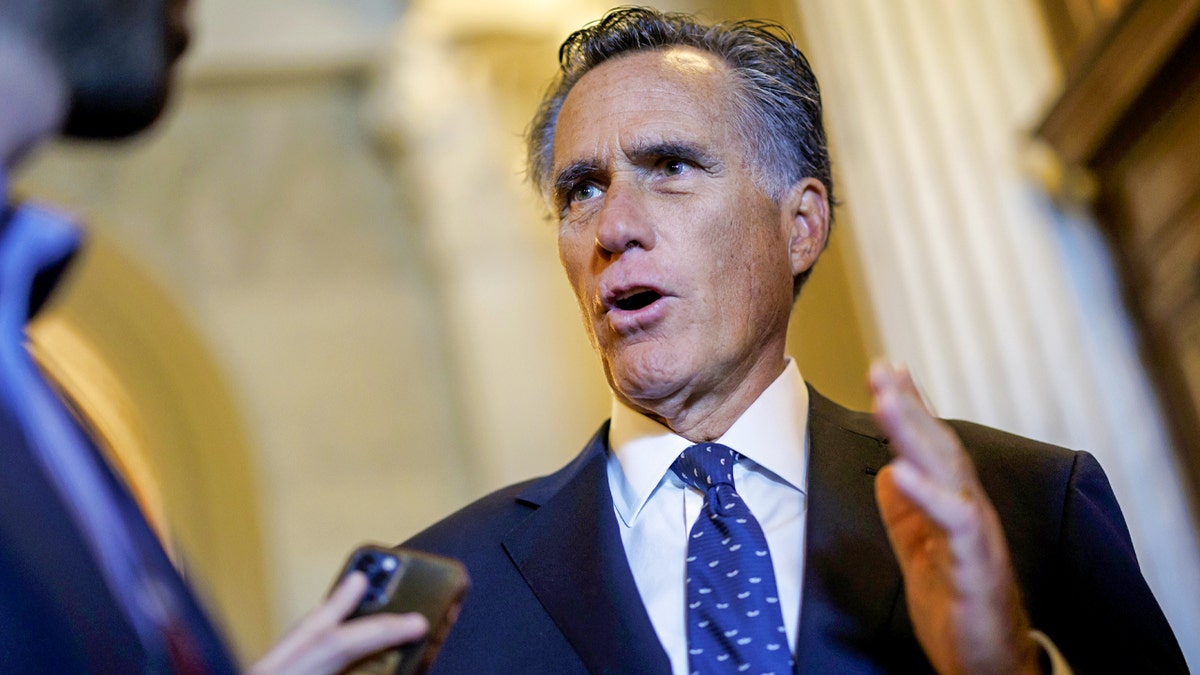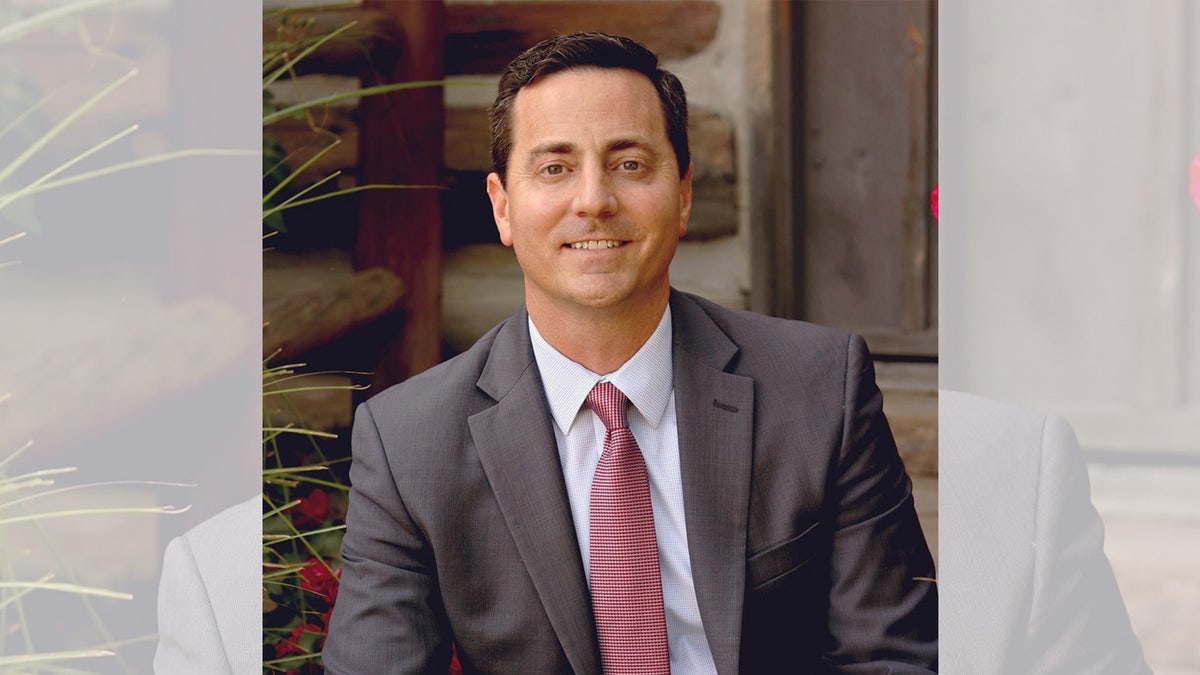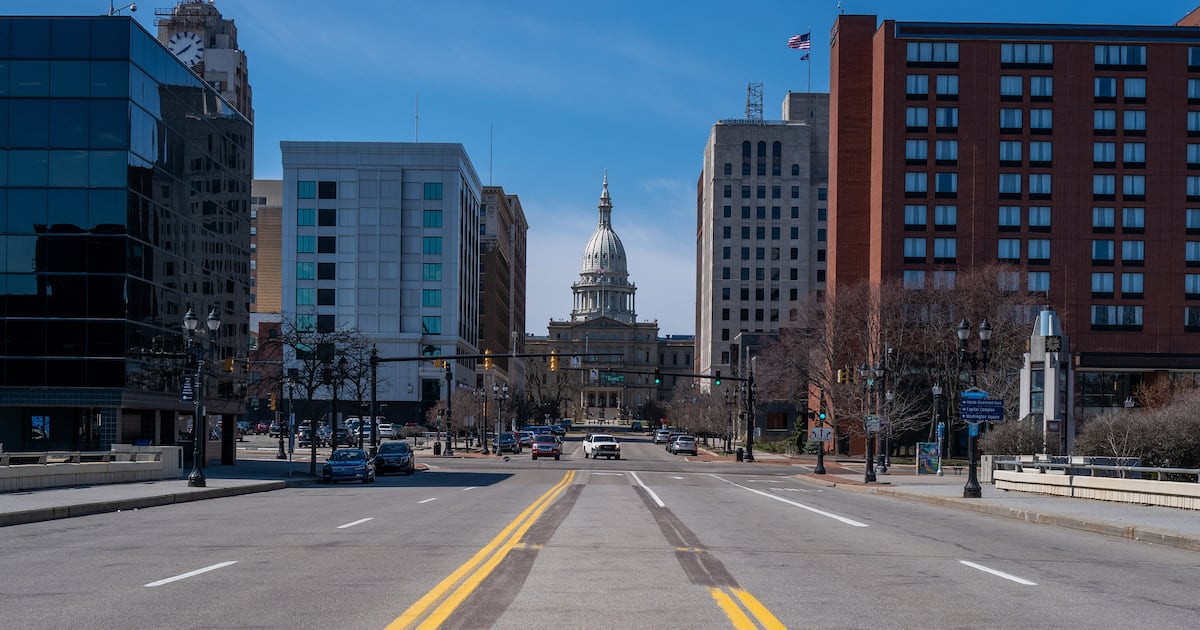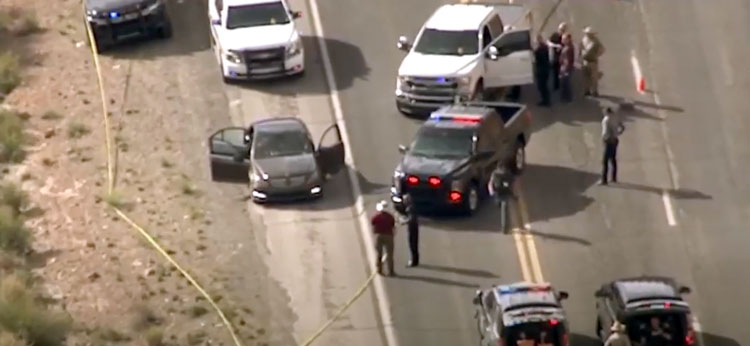West
Trump endorses GOP Utah Senate candidate looking to replace Romney: 'He will be a GREAT Senator'

Former President Donald Trump endorsed Trent Staggs, a Republican mayor seeking to replace retiring Republican Sen. Mitt Romney, in Utah’s GOP primary race for the Senate.
“Trent Staggs is 100% MAGA, and is running to fill The Mitt Romney, a Total Loser, Seat as the next Senator from the Great State of Utah,” Trump wrote in a Saturday morning post on Truth Social. “A Highly Successful Entrepreneur, who has served brilliantly as Mayor of Riverton for the past six years, Trent knows how to Create Jobs, Stop Inflation, Grow the Economy, and Secure the Border.”
“As your next Senator, Trent will help us Unleash American Energy, Support our Military/Vets, and Protect our always under siege Second Amendment,” he added. “Trent Staggs has my Complete and Total Endorsement – He will be a GREAT Senator, and never let you down!”
Trump’s endorsement of Staggs came on the same day nearly a dozen Republicans — including former House Speaker Brad Wilson and current Utah Rep. John Curtis — squared off for the party’s nomination in a race expected to reveal the brand of political conservatism that most appeals to modern voters in the state.
TRENT STAGGS RECEIVES ENDORSEMENT FROM UTAH’S LARGEST POLICE UNION
Former President Donald Trump endorsed Trent Staggs in Utah’s GOP primary race for the Senate on Saturday. (Getty Images, Trent Staggs campaign)
Riverton Mayor Trent Staggs, who gained notoriety in 2020 for his opposition to mask mandates amid the coronavirus pandemic, announced his decision to enter the race last May, prior to Romney’s announcement that he would retire from the chamber at the end of his term next year.
“I love my children, and I’m worried about the country they will inherit if I sit on the sidelines,” Staggs told Fox News Digital at the time. “For too long, we’ve allowed government bureaucrats to spend away the next generation’s future, and we need more voices willing to push back.”
“Mitt Romney fits in the Senate much better than I do. We’ve elected far too many people who ‘fit in’ in Washington. I’m not going to Washington to make friends, I’m going to make change,” he added.
Romney, who won the GOP nomination for president in 2012 and was later defeated by Barack Obama, announced in September that he would not be seeking a second term in the Senate.
GOP SENATE HOPEFUL LOOKS TO DISTANCE HIMSELF FROM LINK TO TEXAS GREEN ENERGY FIRM

Romney announced in September that he would not be seeking a second term in the Senate. (Ting Shen/Bloomberg via Getty Images)
In announcing his decision, Romney declared he’s not “retiring from the fight,” and he bashed both President Biden and Trump while calling for “a new generation of leaders.”
“I have spent my last 25 years in public service of one kind or another. At the end of another term, I’d be in my mid-80s. Frankly, it’s time for a new generation of leaders. They’re the ones that need to make the decisions that will shape the world they will be living in,” Romney said in a statement obtained by Fox News Digital at the time.
Staggs was one of the first candidates to pose a potential challenge to Romney and has since picked up endorsements from several prominent Republicans, including Sen. Tommy Tuberville, R-Ala., Arizona Senate candidate Kari Lake, Rep. Matt Gaetz, R-Fla., former presidential candidate Vivek Ramaswamy, among others.
He has also received the backing of Utah’s largest police union — the Utah Fraternal Order of Police, which labeled Staggs as “a longtime supporter of law enforcement and specifically the FOP.”

Staggs was one of the first candidates to pose a potential challenge to Romney and has since picked up endorsements from several prominent Republicans and the state’s largest police union. (Trent Staggs)
“He understands the need to protect our safety as well as our working conditions, and we wholeheartedly endorse his candidacy,” the union said in a statement to Fox last June.
CLICK TO GET THE FOX NEWS APP
The winner at Saturday’s state GOP convention, which tends to favor far-right candidates who appeal to the most zealous party members, may get a bump in the race. Some losing candidates still may qualify for the June 25 primary ballot by gathering signatures, so Republican voters will ultimately decide the party’s pick to succeed Romney.
The Associated Press contributed to this report.
Read the full article from Here

Montana
Anti-immigration group organized Northwest Montana lawmakers' trip to southern border

Two Northwest Montana lawmakers toured the southern border in March with NumbersUSA, a self-described immigration reform group that organizations who track extremists say is tied to the racist founder of the modern anti-immigration movement.
State Reps. Steve Gunderson, R-Libby, and Braxton Mitchell, R-Columbia Falls, were among a small group of Montana legislators to visit the U.S.-Mexico border as part of a trip organized by NumbersUSA. Both said they were unaware of NumbersUSA’s history or reputation.
NumbersUSA has often been described as an anti-immigrant group whose primary goal is pressuring elected officials to reject pro-immigration legislation and immigration reform, according to Stephen Piggot, a researcher and program director at the Western States Center, a Portland, Oregon-based group that tracks extremists.
“I have no issue with elected officials visiting the [southern border] … but for elected officials to accept an invite to tour the border with a group like NumbersUSA is deeply problematic,” said Piggot, who has spent the last 15 years keeping tabs on NumbersUSA.
The group was founded in 1996 by Roy Beck, who had very close ties to John Tanton, founder of the modern anti-immigration movement, Piggot said.
Described by the Southern Poverty Law Center as holding white nationalist beliefs, Tanton argued that a “European-American majority” is required to preserve American culture, according to the civil rights and racial justice nonprofit. Tanton, a Michigan-based ophthalmologist who died in 2019, spearheaded efforts through the group ProEnglish that opposed bilingual education and the translating of government documents into other languages.
Over time, Tanton created a network of immigration organizations, including the Federation for American Immigration Reform and the Center for Immigration Studies. NumbersUSA was founded by Beck, whom Tanton had described as his “heir apparent,” Piggot said.
“[Tanton] certainly had a role in it some way of forming this organization,” Piggot said.
The three groups profoundly shaped the immigration debate in the United States, according to the Southern Poverty Law Center.
“I still think [NumbersUSA is] influential, I would still consider them to be one of the three main anti-immigration groups on the Hill,” Piggot said.
When asked about the group’s history, Mitchell said he had “never heard of them.”
“I don’t agree with radical movements, ideas or ideals, be it ideas backed by liberal, white nationalism, black, brown, yellow or white people,” Gunderson said. “Illegal immigration is a cross-cultural American problem. I remain colorblind to ideals and movements but focus on the national issue of illegal immigration which remains illegal.”
NumbersUSA disputes how it is characterized by the Southern Poverty Law Center and other extremist monitoring groups.
In an April opinion piece published by the Denver Post, NumbersUSA leaders argued it is a policy group with mainstream positions on immigration reform.
“This allegation would be laughable if it weren’t so serious,” wrote Leon Kolankiewicz, the scientific director of the group, in the piece.
According to Kolankiewicz, Beck founded NumbersUSA in 1996 to advocate for solutions proposed by Barbara Jordan, then-chair of the U.S. Commission on Immigration Reform, who recommended scaling back legal immigration and cracking down on illegal immigration.
“The term ‘white supremacy’ should never be used around any of us, other than to state our firm opposition to the ideology,” Kolankiewicz wrote.
NumbersUSA also includes a page on its website dedicated to “No Immigrant Bashing,” which states that the group encourages Americans concerned about immigration to refrain from anger toward “the foreign-born who live among us.”
Piggot said that the history of the group, specifically its ties to Tanton and his racist rhetoric, cannot be erased. The group hasn’t “cleaned house,” Piggot said, and there isn’t much of a difference between what the group looked like and stood for 20 years ago to today.
Piggot encourages legislators and citizens to research groups addressing immigration to see where they came from.
“It’s totally fine to go down to the border, but you need to be thoughtful,” Piggot said.
FOLLOWING THE trip, both Gunderson and Mitchell expressed concern for what they saw in terms of border security, an influx of immigrants and a lack of federal action.
“There are problems that are actually present at both borders, the southern border being much more of a problem. Fentanyl, human trafficking, illegal immigrants … the same issues exist at both borders, it’s just a difference in magnitude for the southern border,” said Gunderson, reflecting on his trip.
Gunderson said he learned of the trip from other state legislators. Andrew Good, the NumberUSA’s director of state government relations, said that if enough people were interested they could arrange a tour. According to NumbersUSA, each legislator paid for their own trip. Good led the group.
Gunderson said he gained knowledge from other legislators about what can hopefully be done at a state level during his time at the border.
He said the effort that migrants made to cross the border left an impression on him.
“… That was the one thing that really struck me: Seeing people that are so aggressively doing whatever they have to do to get across the border. It’s the draw of the American dream,” he said. “But at the same time they are breaking our laws and destroying our heritage.”
The trip was the first of its kind, according to Good. The goal was to see the border, learn about its existing infrastructure and talk to people on the ground, he said. The group observed the border at the Yuma sector in Arizona and then traveled to the San Diego area.
“… The states are going to deal with any fallout from illegal immigration as long as illegal immigration [continues to] have significant costs or impacts,” Good said.
Mitchell, a two-term legislator up for re-election this year, stated that it was important for him to tour the southern border because of the “influx of fentanyl, crime, rapes, etc. that many of these illegal migrants are bringing to our state,” Mitchell said in a statement.
“I believe a country isn’t a country without a strong and secure border,” Mitchell said. “I wish I wouldn’t of had to go down to the border, but due to Joe Biden and the Democratic Party’s open border policies, I was left with no choice but to see it with my own eyes and reflect what I saw back to my constituents and the people of Montana.”
Reporter Kate Heston can be reached at kheston@dailyinterlake.com or 758-4459.
Nevada
Latest COVID strain doesn’t appear to pose a threat in Las Vegas Valley

Wastewater is an early warning system for COVID and other diseases, and a collaborative effort in Nevada appears to be the first in the nation to detect a new strain of the disease — known as FLiRT.
“We detected it as early as March 29,” said UNLV Professor Dr. Edwin Oh, director of the UNLV lab that monitors wastewater in southern and northern Nevada, adding that his check of various websites from labs across the country that do such wastewater monitoring, indicates UNLV was first in finding the new variant.
The goal of the wastewater surveillance and research is to determine if any new strain of the constantly evolving disease — that once killed 25,000 Americans a week at its height in 2020 — might pose a problem for humans.
“So far it does not look like it (FLiRT) poses any major threats,” Oh said of the the two variants — KP.1 and KP.2. — that are mutations of FLiRT.
“We nerd out a lot on the different pathogens and variants,” Oh said of his crew that includes UNLV undergrads and wastewater treatment plant operators. About 15 different sites are checked weekly in Clark County and three or four sites in Northern Nevada.
The effort is to warn and protect the community from COVID variants that could raise the risk of major sickness potential.
Genetic material from the virus that causes COVID-19 can be found in human waste even when individuals have no symptoms. Tracking the amount of viral genetic material (viral load) in wastewater is an emerging method of monitoring increasing and decreasing trends of the virus in communities.
Wastewater surveillance has been ongoing for years. The most recent variant that raised eyebrows was JN.1 around Christmas time, Oh said. “It had about 50 mutations and a lot of us were concerned that it might bring added risk to the immunocompromised (population) or the vaccine resistant (population).”
The wastewater monitoring project is a collaboration between Southern Nevada Health District, Southern Nevada Water Authority, Desert Research Institute and UNLV.
Contact Marvin Clemons at mclemons@reviewjournal.com.
New Mexico
El Paso residents rally to protect a Rio Grande Wetland • Source New Mexico

EL PASO—Dozens of people crammed into a conference room on the eastern edge of El Paso on a recent Thursday evening. Some brought signs, some wore T-shirts, others diligently wrote their feedback on notecards. But the message was resounding: Don’t build a highway near our wetland.
Conservation advocates in El Paso say the Texas Department of Transportation (TxDOT) should steer clear of the Rio Bosque Wetlands Park as it considers potential highway expansion in southeast El Paso County. TxDOT is in the early planning phase to improve mobility in the Mission Valley. A corridor study identified three possible routes to extend a highway through the area. All three routes run alongside the Rio Bosque, a 372-acre park managed by the University of Texas at El Paso (UTEP) and the local water utility, El Paso Water.
The idea has elicited an uproar among El Paso residents who treasure the restored wetland ecosystem at Rio Bosque. Wetlands lined the Rio Grande in El Paso before a series of engineering projects straightened the river and encased the riverbed in concrete. But beginning in the 1990s, UTEP led a group of local conservationists who revived a dried-out river bend to make the Rio Bosque park. The wetland ecosystem now attracts hundreds of bird species and local universities rely on the park for fieldwork.
Rio Bosque is one of a handful of wetlands restoration projects along the Rio Grande in Southern New Mexico and West Texas, which environmental scientists compare to a “string of pearls” that improves wildlife connectivity across the region.
Conservation advocate Jon Rezendes said a highway next to Rio Bosque would be a “death trap” for birds and flying insects. “It will functionally kill Rio Bosque,” he said.
Transportation is the second-biggest source of greenhouse gas emissions in Texas after industry, accounting for about a third of emissions. Carbon emissions from vehicles in Texas are steadily increasing. Texas is increasing funding for highways, with the most recent budget appropriating $32.7 billion for state highway projects.
But both in Texas and nationwide, the role of highways is being re-examined. Residents have organized against highway expansions in cities like Houston and Austin, and federal transportation agencies are addressing the legacy of highways that pass through communities of color. In El Paso, TxDOT has studied the possibility of extending the Border Highway, which runs through south-central and southeast El Paso along the border wall, further east since the 1990s. But the latest iteration of the study has sparked spirited opposition from conservation advocates.
TxDOT says the area needs more road capacity. But El Pasoans are calling for alternatives that don’t impact Rio Bosque and other historical and cultural sites in the area.
Jennifer Wright, a spokesperson for TxDOT’s El Paso office, said that if a project comes out of the corridor study, it will take years to secure funding and go through the permitting process.
For now, she said, the concept maps are nothing more than ideas from engineers about what options would be “reasonable and feasible” to address traffic issues in the area. She said there is no “imminent threat” to Rio Bosque.
El Paso lost its wetlands — until Rio Bosque
When the city of El Paso took ownership of Rio Bosque in 1973, it was a dry patch of land overtaken by invasive saltcedar trees. But local conservationists had a vision: to restore the wetlands that once lined the banks of the Rio Grande.
In the late 19th and early 20th centuries, seasonal floods on the Rio Grande caused widespread damage in El Paso and Ciudad Juárez, its Mexican sister city. The Treaty of Guadalupe Hidalgo at the end of the Mexican-American War established the river as the international border in 1848. But the river changed course with each flood season, flummoxing officials trying to map the official boundary.
To prevent floods, improve irrigation and solidify the international boundary, the meandering Rio Grande through El Paso-Juárez was straightened and encased in concrete between the 1880s and the 1930s. “There are few river systems in the world that have experienced such massive transformation so rapidly,” wrote a group of environmental scientists in a 2023 paper.
University of Texas at Austin environmental historian C.J. Alvarez, who studies construction on the border, calls the Rio Grande through El Paso and Ciudad Juárez “more damaged, more manipulated, and more engineered” than any other section of the 1,900-mile long river. 
The free-flowing Rio Grande was transformed into a channel dedicated to farm irrigation.
The bends and oxbows of the river were eliminated. The wetlands along the river’s banks dried out.
The Rio Bosque land occupied one of those old, dried-out river bends.
The idea to create a wetland at Rio Bosque got off the ground in the late 1990s. UTEP’s Center for Environmental Resource Management signed on to manage the site. John Sproul has served as the park’s manager ever since, now with the help of assistant park manager Sergio Samaniego, a UTEP graduate.
Their biggest challenge is securing water to fill the wetlands, especially in dry years like 2023, when El Paso only received 4.34 inches of rain, about half of the average annual precipitation. El Paso Water provides treated wastewater from its nearby treatment plant. The park also gets irrigation water from the Rio Grande and relies on wells.
But the hard work is paying off and native vegetation like Rio Grande cottonwoods and Goodding’s willows are now well-established. Birds have flocked to the park, which the border fence separates from the Rio Grande. Threatened species like the western yellow-billed cuckoo, which migrates from Central and South America and had not been sighted for years in El Paso, was first spotted at Rio Bosque in 2007. It’s become a popular spot for birders who keep a running list online of their sightings.
“Any effort, no matter how small, to remind people what it would look like to rewild the place—to look back in time before the big engineering projects—is a good thing,” Alvarez said.
Growing pains in the Mission Valley
While the Rio Bosque wetlands was taking shape in the late 1990s, transportation planners were also eying the area. TxDOT completed a feasibility study in 1997 that laid out conceptual designs for a highway stretching 20 miles between the Zaragoza bridge—two miles north of Rio Bosque — and the border crossing at Fabens, Texas. That first study references Rio Bosque and the “proposed wetlands preserve.”
The study sat dormant for years. TxDOT revisited the study in 2013 and 2014 to create an updated Border Highway East Corridor Study. The conceptual route for the highway ran northeast of Rio Bosque. During public comments in 2013, numerous people urged TxDOT to move the highway further away from Rio Bosque.
Meanwhile, the communities around Rio Bosque were changing. Farmland was gradually being developed for housing, bringing more cars to the area’s aging roads. Commercial truck traffic from Juárez into El Paso at the Ysleta-Zaragoza International Bridge steadily increased. By 2020, there were over 587,000 truck crossings into El Paso at the bridge, up 52 percent from 2010.
“With the increase in population and commercial traffic and activity at the port of entry, the congestion is getting worse and worse,” said Iliana Holguin, county commissioner for Precinct 3, which includes Socorro and the Lower Valley. “We have tremendous mobility needs in that area but we also have to protect the resources that are there.”
El Paso’s Mission Valley is named for the area’s three original Spanish missions: Ysleta, Socorro and San Elizario. Ysleta is now within the El Paso city limits, just north of Rio Bosque, and Socorro and San Elizario are municipalities south of the park. Socorro, the area’s first mission, was founded in 1682.
The valley is also El Paso’s most important agricultural area, fed by the Rio Grande. It is also home to Ysleta del Sur Pueblo, one of three federally recognized tribes in Texas. Also known as Tigua Pueblo, its members were displaced from what is now New Mexico in the 1600s and resettled on their current lands.

TxDOT’s concepts also have the highway passing by the Tigua’s tribal lands. The Tribal Council did not respond to a request for comment on TxDOT’s corridor study.
“[Rio Bosque] is a place of prayer, a place to have peace,” said Andrea Everett, a member of the Ysleta del Sur Pueblo and environmental scientist. “It is the last place that actually looks like when our ancestors were displaced here in 1680.”
Everett, who studied the impacts of environmental change on the Ysleta del Sur Pueblo in her graduate studies at UTEP, said that Rio Bosque is an important place for her and her family to connect with their ancestors and the riparian ecosystem that once surrounded their tribal lands.
“We’re already an urban tribe but we’re trying to hold on to what we have,” she said.
‘A rewilding success story’
Jon Rezendes fell in love with El Paso and its mountains while serving in the military at Fort Bliss. After leaving the military, Rezendes and his wife and children stayed in the desert city. Rezendes started taking his kids to Rio Bosque, where they would watch for birds and explore miles of dirt trails.
“Rio Bosque is a true rewilding success story,” Rezendes said, referring to the process of increasing biodiversity and restoring the natural processes of an ecosystem, including the reintroduction of native species. “For me the idea of returning the land to its natural state in any way we can is beautiful.”
Rezendes learned about the corridor study, and as a volunteer with local conservation groups, he spread the word about TxDOT public meetings held the first week of May. He attended a meeting on May 2 wearing a Protect Rio Bosque t-shirt and said he will keep fighting until TxDOT abandons the idea.
During the public meeting, concept maps were rolled out on tables and participants voiced their opposition on sticky notes affixed to the maps: “We need public transportation,” one read. “Wouldn’t the completion of a border bike system be awesome?” read another.
Wright, TxDOT’s spokesperson, said public transportation is not currently included in the concepts.
UTEP declined to make Rio Bosque staff available for interviews. While TxDOT’s conceptual routes do not directly cut onto the park property, two routes lay just northeast of the park and the third to the southwest of the park, between its boundaries and the border fence. The Rio Bosque newsletter for April alerted supporters to the risks if a highway is built in this buffer zone, stating that the buffer provides “an avenue for wildlife movement between the park and other areas.”

El Paso Water, which helps manage the park, came out against the three concepts from TxDOT’s study, saying a highway could impact the utility’s nearby wastewater treatment plant and Rio Bosque. In a statement, the utility said all three options would “pose serious environmental threats” to Rio Bosque.
Rio Bosque “is also one of the few and unique public open spaces in the Lower Valley where families can enjoy trails, go bird watching, and learn what El Paso looked like prior to modern development,” said Gilbert Trejo, the utility’s vice president of operations.
TxDOT project manager Gus Sanchez said he and his colleagues heard the feedback in 2014 and moved the potential routes to go around Rio Bosque and not cross the property. Opponents say even if the highway does not cross Rio Bosque property, wildlife will be in danger and noise and light pollution would fundamentally change the park.
“We’re constrained because we have Rio Bosque on the south side and neighborhoods on the north side,” Sanchez explained. “It’s not like we can move it a half-mile north.”
Wright said there are models for creating wildlife crossings that TxDOT has used in other locations. She referenced crossings for ocelots in South Texas as one example. Once a specific design is completed, the project would be subject to further review, including one to ensure it complies with the National Environmental Protection Act.
“We’re not interested in destroying habitat,” Wright said. “[Rio Bosque] is clearly a treasured element in our city. But we need to take a look.”
If the vigorous debate at public meetings this month is any indication, the fight for Rio Bosque is only getting started. For many in this border city, the 372-acre park is more than a place to go birding or hiking: it’s a symbol of the river ecosystem that was lost and recovered and, with enough will, might be preserved for future generations.
-
News1 week ago
A group of Republicans has united to defend the legitimacy of US elections and those who run them
-

 Politics1 week ago
Politics1 week agoHouse Dems seeking re-election seemingly reverse course, call on Biden to 'bring order to the southern border'
-

 World1 week ago
World1 week ago‘It’s going to be worse’: Brazil braces for more pain amid record flooding
-

 Politics1 week ago
Politics1 week ago'Stop the invasion': Migrant flights in battleground state ignite bipartisan backlash from lawmakers
-

 Movie Reviews1 week ago
Movie Reviews1 week agoExhuma Movie Review: An effective horror film steeped in myth, legends, and realism
-

 World1 week ago
World1 week agoGerman socialist candidate attacked before EU elections
-

 World1 week ago
World1 week agoSpain and Argentina trade jibes in row before visit by President Milei
-

 Politics1 week ago
Politics1 week agoRepublicans believe college campus chaos works in their favor














